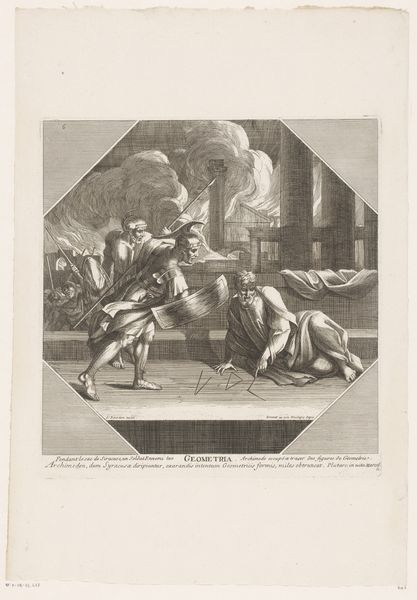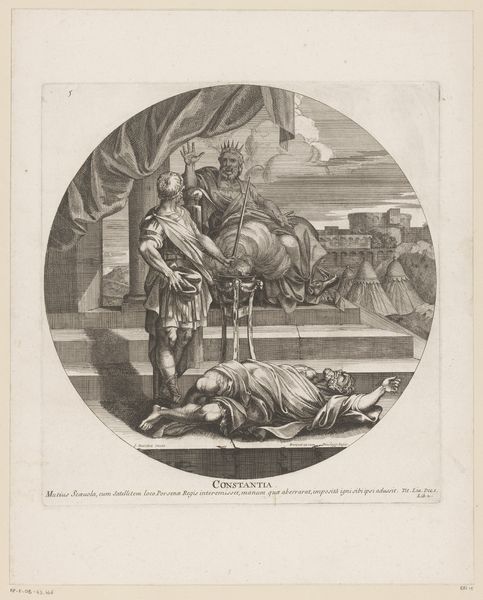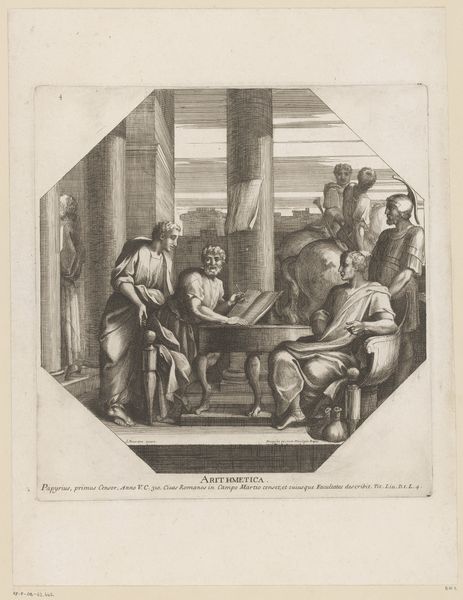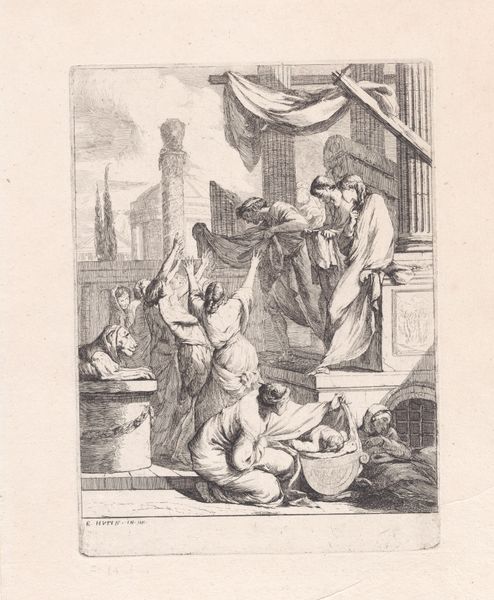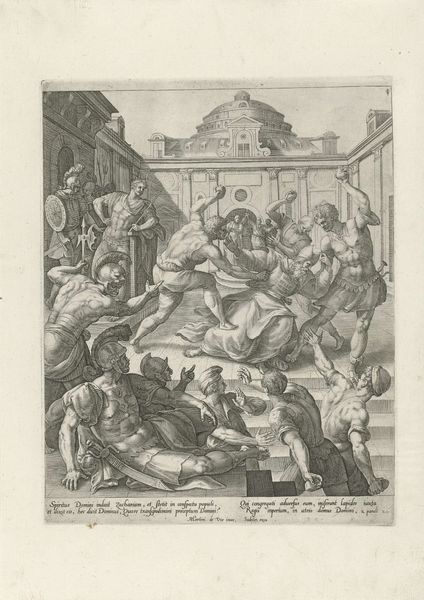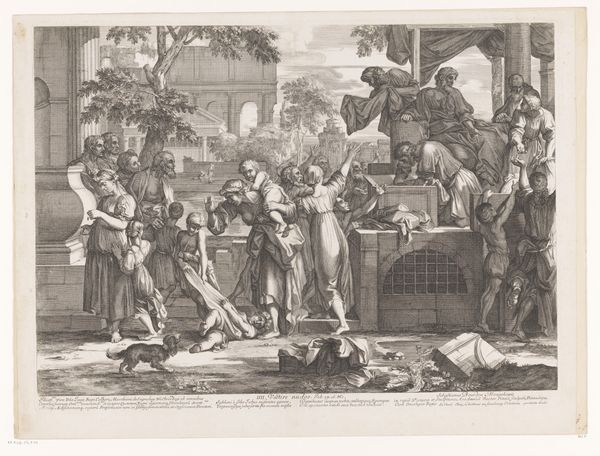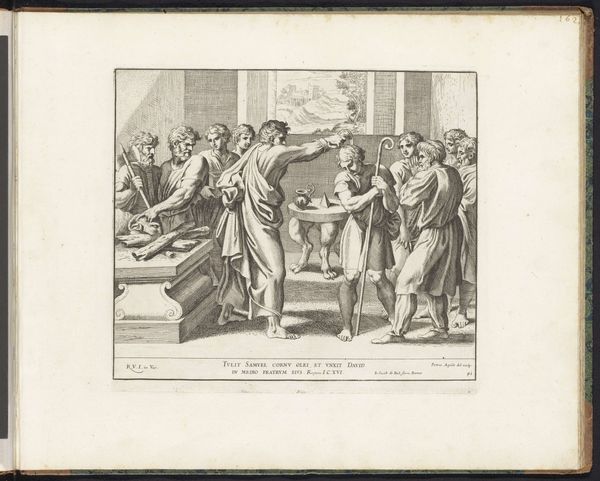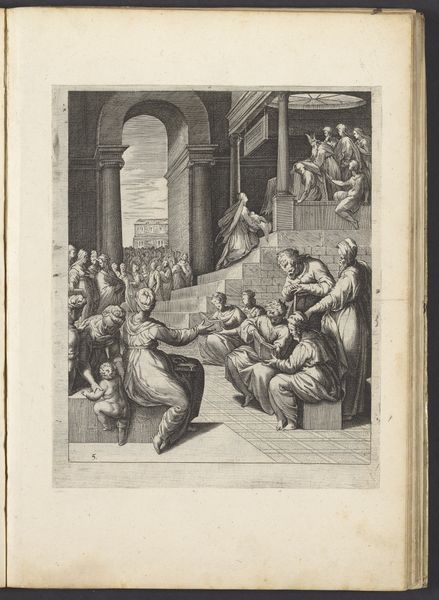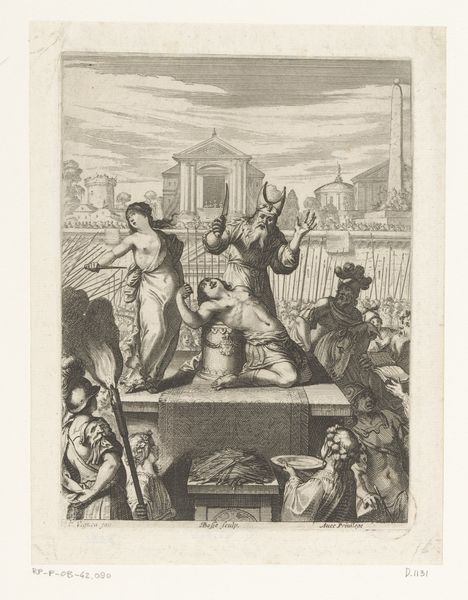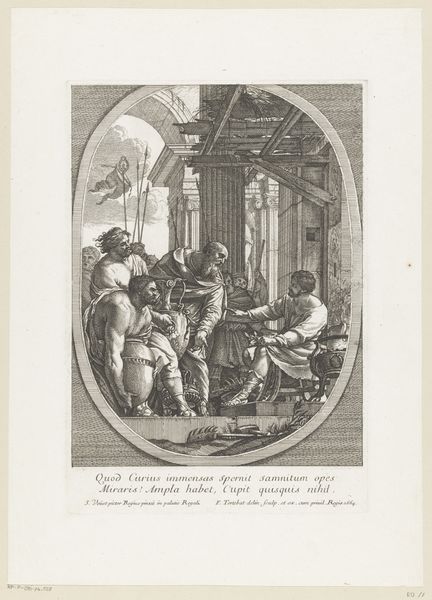
print, engraving
#
allegory
#
baroque
# print
#
old engraving style
#
classical-realism
#
historical photography
#
history-painting
#
engraving
Dimensions: height 316 mm, width 288 mm
Copyright: Rijks Museum: Open Domain
Curator: Today, we're observing an engraving entitled "Vrijgevigheid", which translates to Generosity, produced sometime between 1663 and 1716 by Jacques-Antoine Friquet de Vauroze. Editor: The linear precision immediately strikes me, almost cool in its detached portrayal of abundance. The figures, rendered in delicate lines, evoke a sense of calculated distribution rather than heartfelt charity. Curator: Indeed, the engraving excels through the careful articulation of form, revealing a tableau rich in classical allusion and Baroque sensibilities. Note how the figures are arranged across a stepped platform, creating a clear visual hierarchy reinforced by the tonal gradations achieved through cross-hatching. Editor: It reads almost as a staged display of power, the ruler dispensing "generosity" from an elevated position, reinforcing a system of dependency. What sociopolitical conditions framed the reception of this work? Curator: It's an intriguing avenue of interpretation. Consider that this print aimed to underscore specific ideological frameworks linked to rulership. Its classical style would allude to established power, while its dissemination via print afforded wide distribution during its time. Editor: While the piece showcases undeniable technical prowess in the use of line and texture, can we move beyond a mere appreciation of its aesthetics and explore the themes of wealth disparity and the performative aspects of power inherent in such depictions of generosity? I find this a commentary on those social structures. Curator: Without undermining your assertions regarding power, consider the artist's intentional play with composition. The architectural elements, juxtaposed against softer draperies, highlight the intellectual engagement so cherished during its Neoclassical revivals. Editor: Perhaps both elements coexist. The calculated structure enhances, rather than diminishes, the potential critique of unchecked authority masked under benevolent pretense. These carefully organized elements contribute to the overall mood; they certainly elicit questions around philanthropy today. Curator: Precisely, engaging with these discussions enables a rich appreciation beyond aesthetics and delves deep into cultural history. Editor: A worthwhile exchange. Indeed, reflecting on these questions offers insightful and meaningful consideration of generosity and representation.
Comments
No comments
Be the first to comment and join the conversation on the ultimate creative platform.
